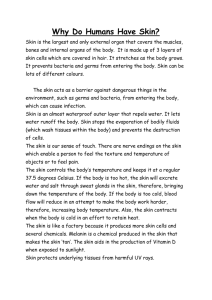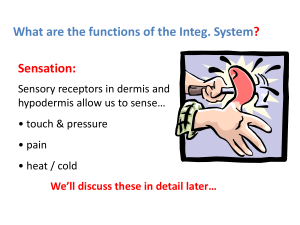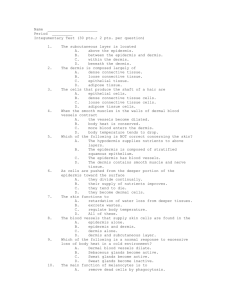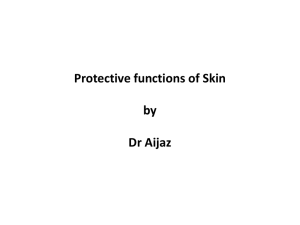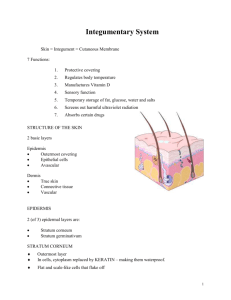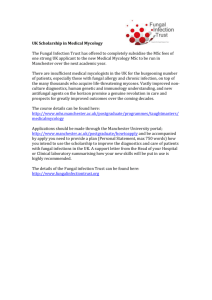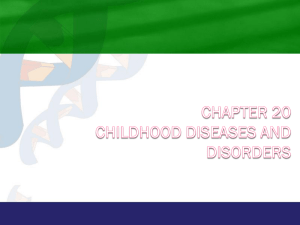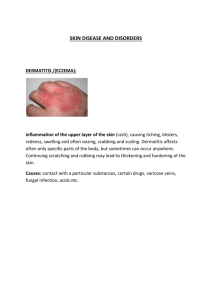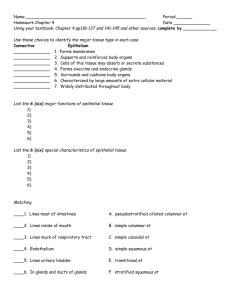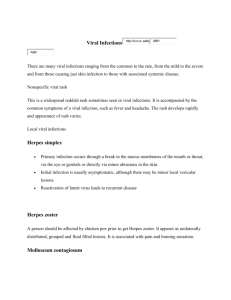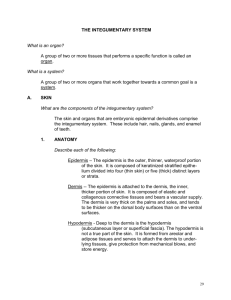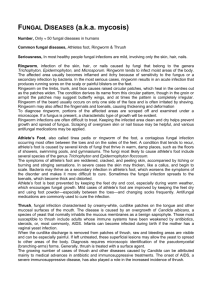Notes for Chapter 8: Skin
advertisement
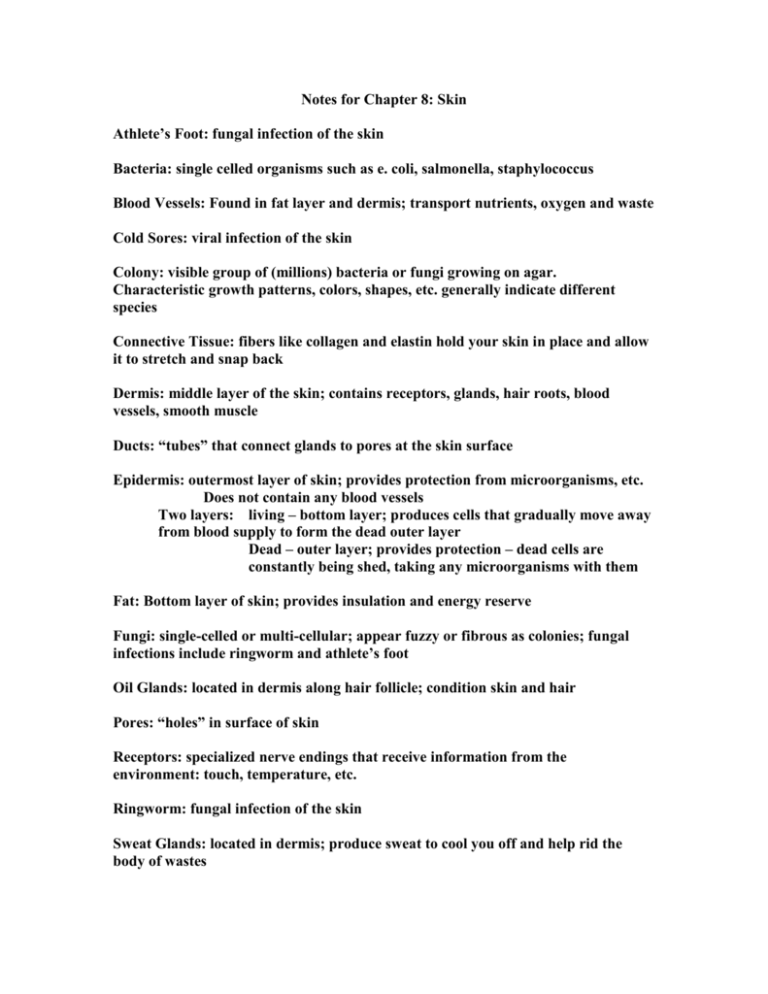
Notes for Chapter 8: Skin Athlete’s Foot: fungal infection of the skin Bacteria: single celled organisms such as e. coli, salmonella, staphylococcus Blood Vessels: Found in fat layer and dermis; transport nutrients, oxygen and waste Cold Sores: viral infection of the skin Colony: visible group of (millions) bacteria or fungi growing on agar. Characteristic growth patterns, colors, shapes, etc. generally indicate different species Connective Tissue: fibers like collagen and elastin hold your skin in place and allow it to stretch and snap back Dermis: middle layer of the skin; contains receptors, glands, hair roots, blood vessels, smooth muscle Ducts: “tubes” that connect glands to pores at the skin surface Epidermis: outermost layer of skin; provides protection from microorganisms, etc. Does not contain any blood vessels Two layers: living – bottom layer; produces cells that gradually move away from blood supply to form the dead outer layer Dead – outer layer; provides protection – dead cells are constantly being shed, taking any microorganisms with them Fat: Bottom layer of skin; provides insulation and energy reserve Fungi: single-celled or multi-cellular; appear fuzzy or fibrous as colonies; fungal infections include ringworm and athlete’s foot Oil Glands: located in dermis along hair follicle; condition skin and hair Pores: “holes” in surface of skin Receptors: specialized nerve endings that receive information from the environment: touch, temperature, etc. Ringworm: fungal infection of the skin Sweat Glands: located in dermis; produce sweat to cool you off and help rid the body of wastes Viruses: need to “live” inside of a host cell in order to reproduce; much smaller than a cell – cannot be seen with a light microscope; cannot be cultured on agar; viral skin infections include warts and cold sores Warts: viral infection of the skin
